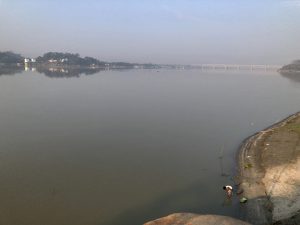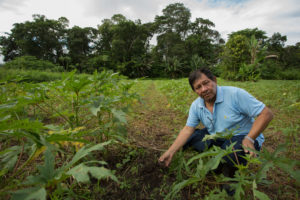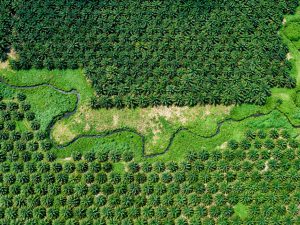Juhi Chaudhary (JC): Conservation biology is not a popular career choice for young people. What motivated you to tread this path?
Nandini Velho (NV): Being born and brought up in Goa, I had the privilege of always being a few kilometres from an ocean, river or forest. I was exposed to nature in my early schooling and growing up in a large family of very culturally, politically and environmentally conscious individuals made me chose this as a career choice. Although I’m a wildlife biologist now, I think daily acts of others in my large family (now 21 first cousins on my mother’s side) are far more commendable: from distributing rosewood saplings for festivals, to reducing and minimising the number of gifts we exchange, to scheduling talks and making sustainable seafood choices in our Goan fish curry and rice.
JC: What made you choose Himalayas as your research area?
NV: If the world was ending where would you spend your last days? The answer for me is Arunachal Pradesh. The first time I went to Arunachal Pradesh, I was hooked like many others. It’s where I’ve made the kindest and most resilient friends. In terms of biodiversity, I think the remaining lowland forests are some of the most beautiful and threatened forests in India. Higher up places like Dibang Valley are some of the most beautiful places on earth. Plus there is a lot of excitement in terms of species diversity and [new] discoveries.
It was only after eight years that I saw my first tiger in Pakke. I would never trade seeing a tiger in a rainforest there for anything else in the world. I realised that the Arunachal-Goa connection is quite strong in the arts – The International Film Festival of India held in Goa helped [the film] Crossing Bridges made by director Sange Dorjee Thongdok who lives close to Arunachal’s Eaglenest Wildlife Sanctuary, become a hit. [Arunachal’s award winning novelist] Mamang Dai’s book Black Hill was released in Goa by a priest. Arunachal Times editor Tongam Rina was invited to give a TEDx talk in Goa just a few months ago. So the science and society connection is just an extension in some way.
JC: Coming to Aichi global biodiversity targets, we have strong and measurable targets that the world needs to achieve by 2020. Why have efforts to meet the targets failed?
NV: Personally I think it is the lack of political will to prioritise environmental protection that is the main reason for our collective failure. I would also add that a lack of understanding of what is happening on the ground is another reason.
JC: We have a year ahead of us to meet Aichi targets, what should be done now to come on track?
NV: There have been some recent and heartening tipping points – Greta Thunberg, the Extinction Rebellion and others are pushing climate change concerns up the political agenda. I think with matters related to biodiversity protection the articulation is slightly tougher, but it’s essentially a subset of the same fight for human wellbeing.
A [new] government will be elected in May and I think there needs to be a serious agenda for biodiversity protection: from a clear agenda to secure existing protecting areas as well as outside protected areas, to critically evaluating new infrastructure projects, to understanding coastal and marine issues, to protecting the rights of people living around these forest and coastal areas.
JC: What would you like to see China and India do globally to lead this process at the CBD?
China’s articulation and intent on dealing with illegal wildlife trade is extremely important given that we are losing a lot of species rapidly. I think both India and China can also be leaders by deciding to be socially and environmentally conscious in dealing with investments in overseas infrastructure projects especially in Africa.
NV: You are working in Arunachal Pradesh, a state that shares its border with China and there are transboundary conservation issues. Are there any areas where India and China must work together?
I think the pangolin trade bust that happened [recently in Singapore] was an indicator of the scale of illegal wildlife trade and the level of cooperation that is required between these two countries (and also Bhutan and Nepal) to curb illegal wildlife trade. From the field, it’s also quite apparent that the demand for illegal wildlife products is causing ripples on the ground. From my experience, residents living around protected areas in Arunachal perceive that otters have declined drastically from around their community-managed forests because of the illegal wildlife trade.
Also there is much to still study and many small species are as imperiled as the larger ones we tend to focus on.
JC: From your experience of working closely with local communities, what is the importance of indigenous knowledge and communities in biodiversity protection?
NV: In many hill states of the north-east, the forest department often represents the local populace. So often you don’t see the feudal and asymmetric power relationships you see in the rest of India. Many are acutely aware that they have to protect the tiger reserve but they go back and have to sit around the fire discussing life with others. The knowledge of many (especially some older people) is phenomenal. For instance Eaglenest Wildlife Sanctuary [in Arunachal Pradesh] and surrounding areas are important to the Shertukpen tribe as every winter they pass through the area to migrate down to the plains of Assam. They would spend two to three months in the foothills of Assam.
I worked with residents to map part of their migration routes and these were some of the best protected forest area I’ve seen, something we would have never known of if it were not for them.
Nandini Velho is a wildlife biologist who has focused on rainforests and the human dimensions of wildlife management over the past decade. She is also a writer and works with local forest managers, artists and designers to engage with outreach and conservation activities, including healthcare and logistical support of front-line forest staff.
![<p>Nandini Velho with forest department officials in Arunachal Pradesh [image courtesy: Nandini Velho]</p>](https://dialogue.earth/content/uploads/2019/05/DSC_7094-1.jpg)







